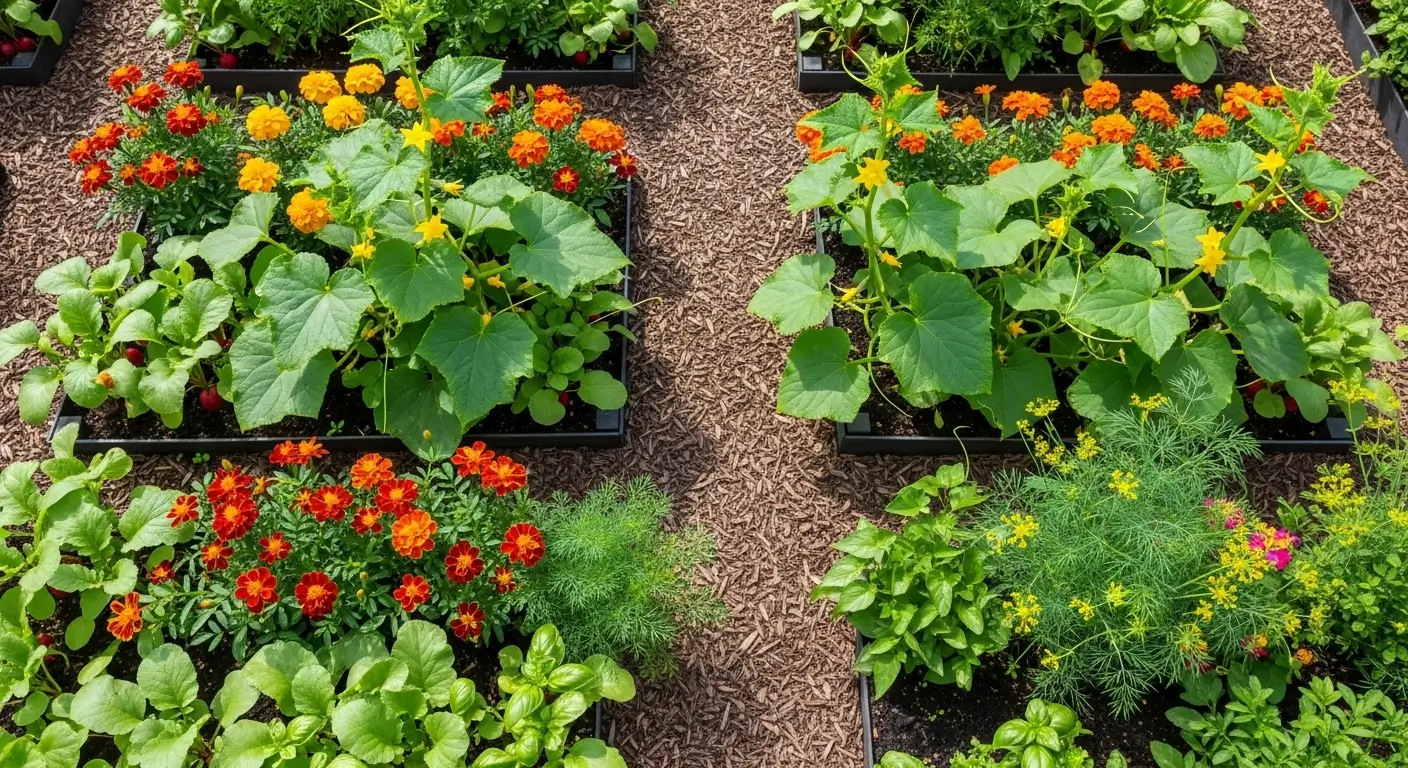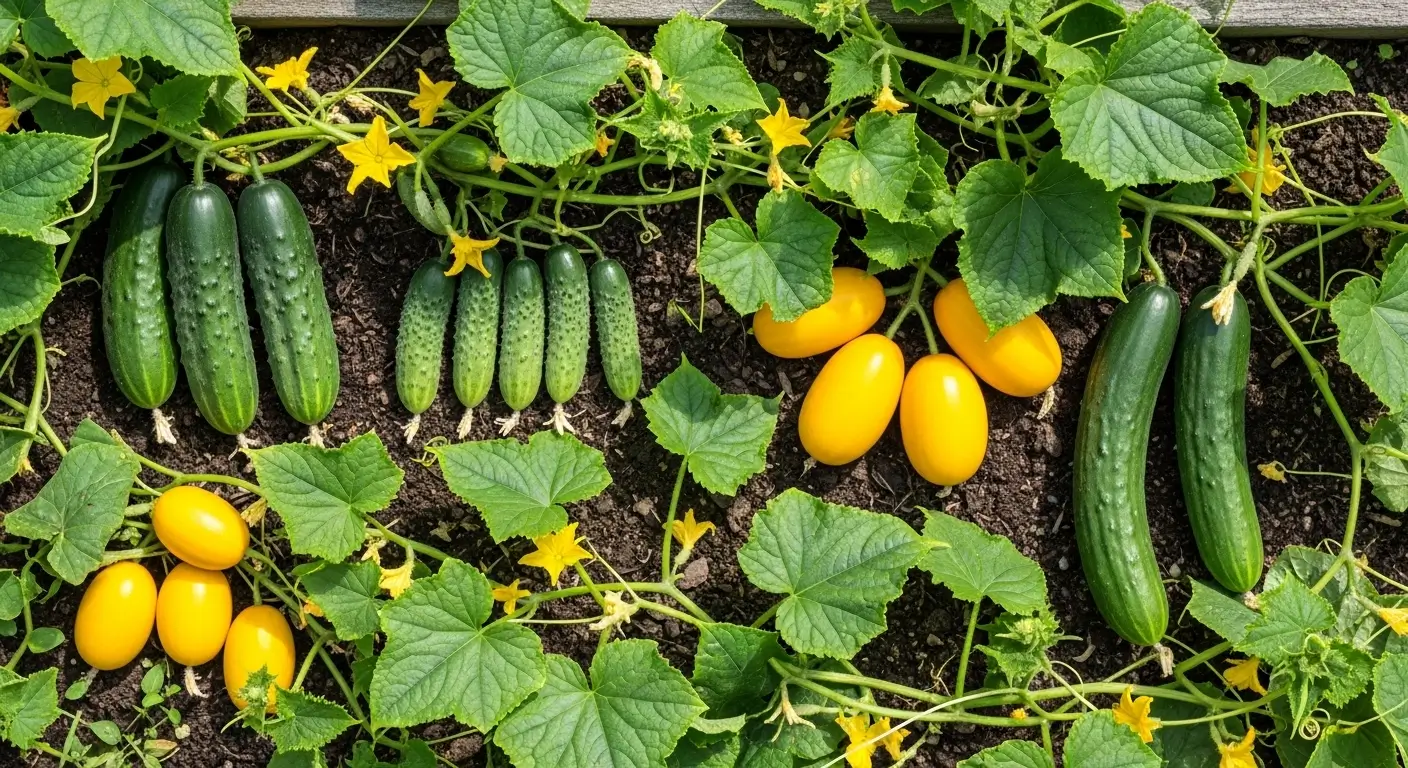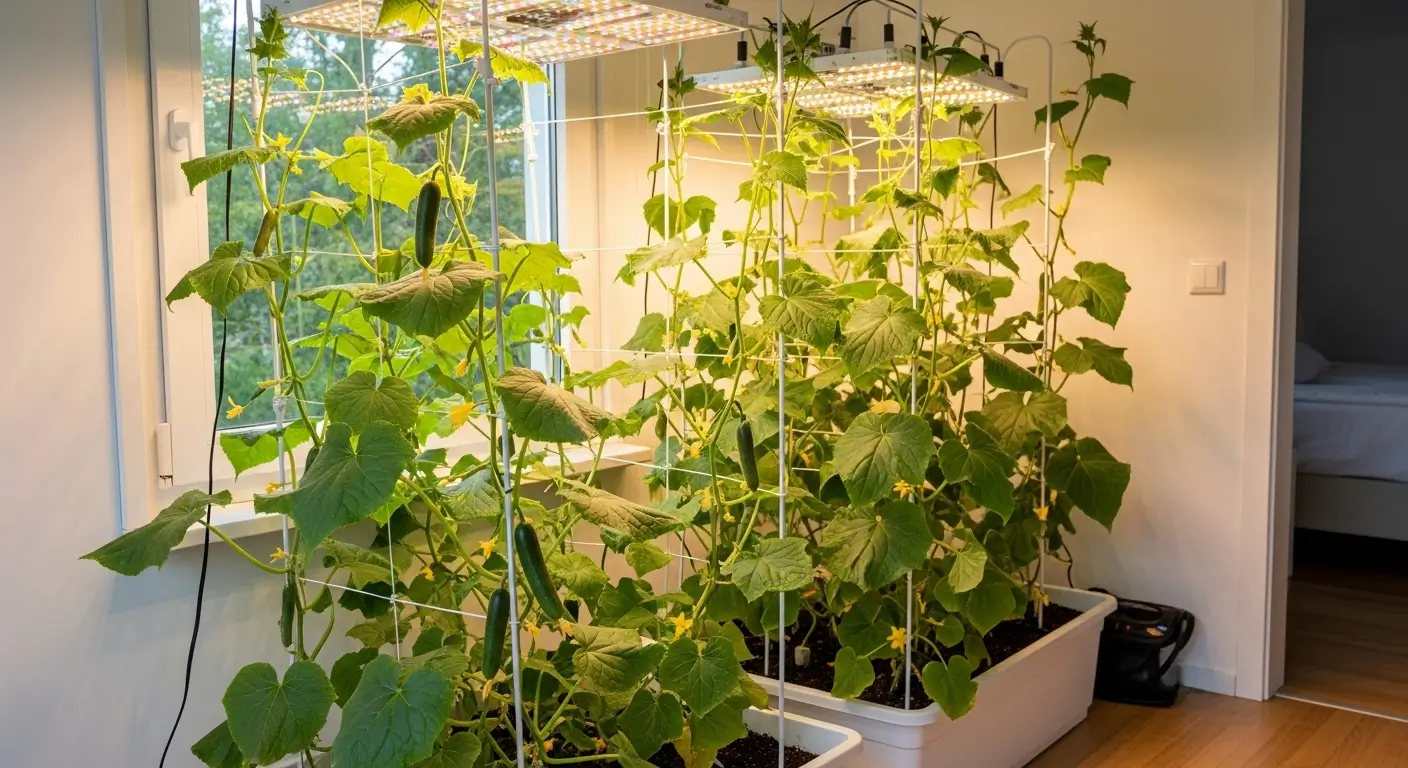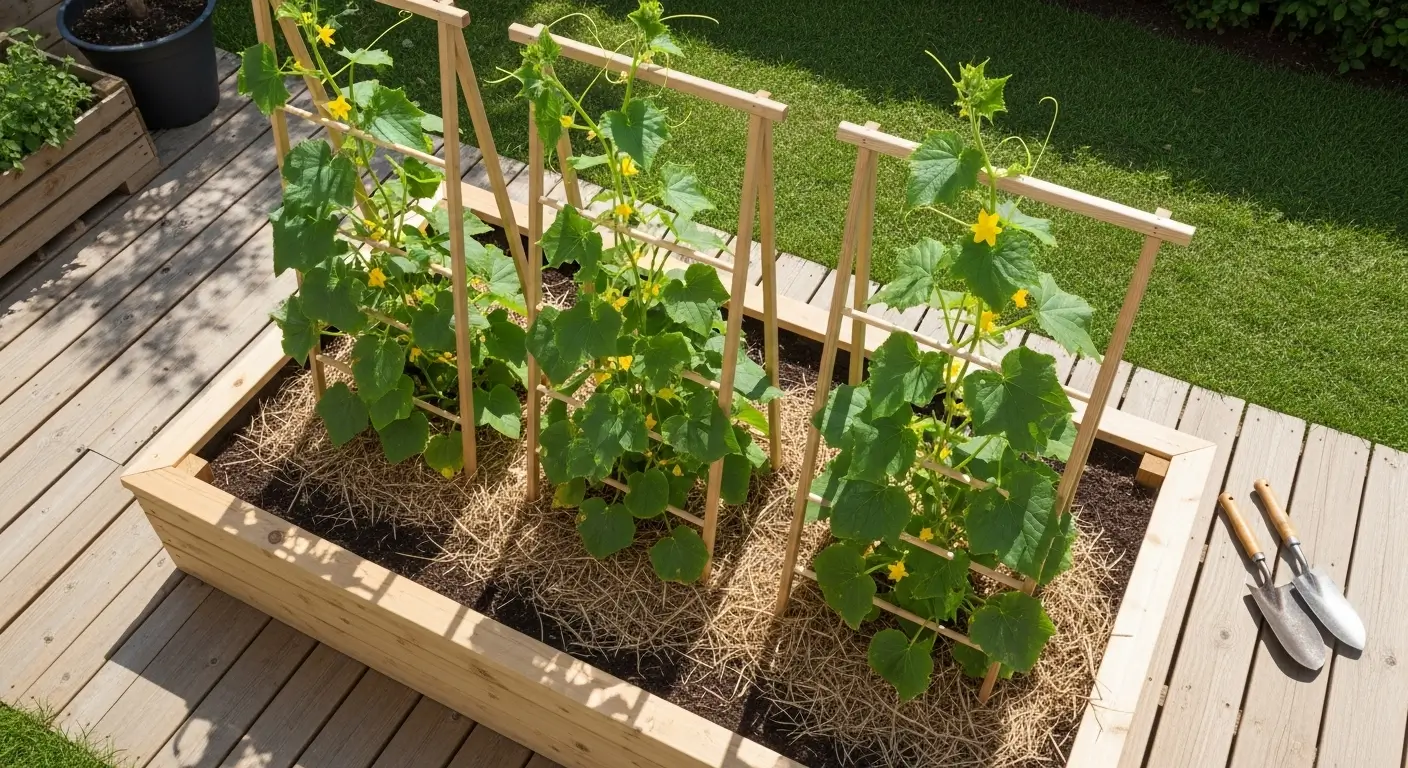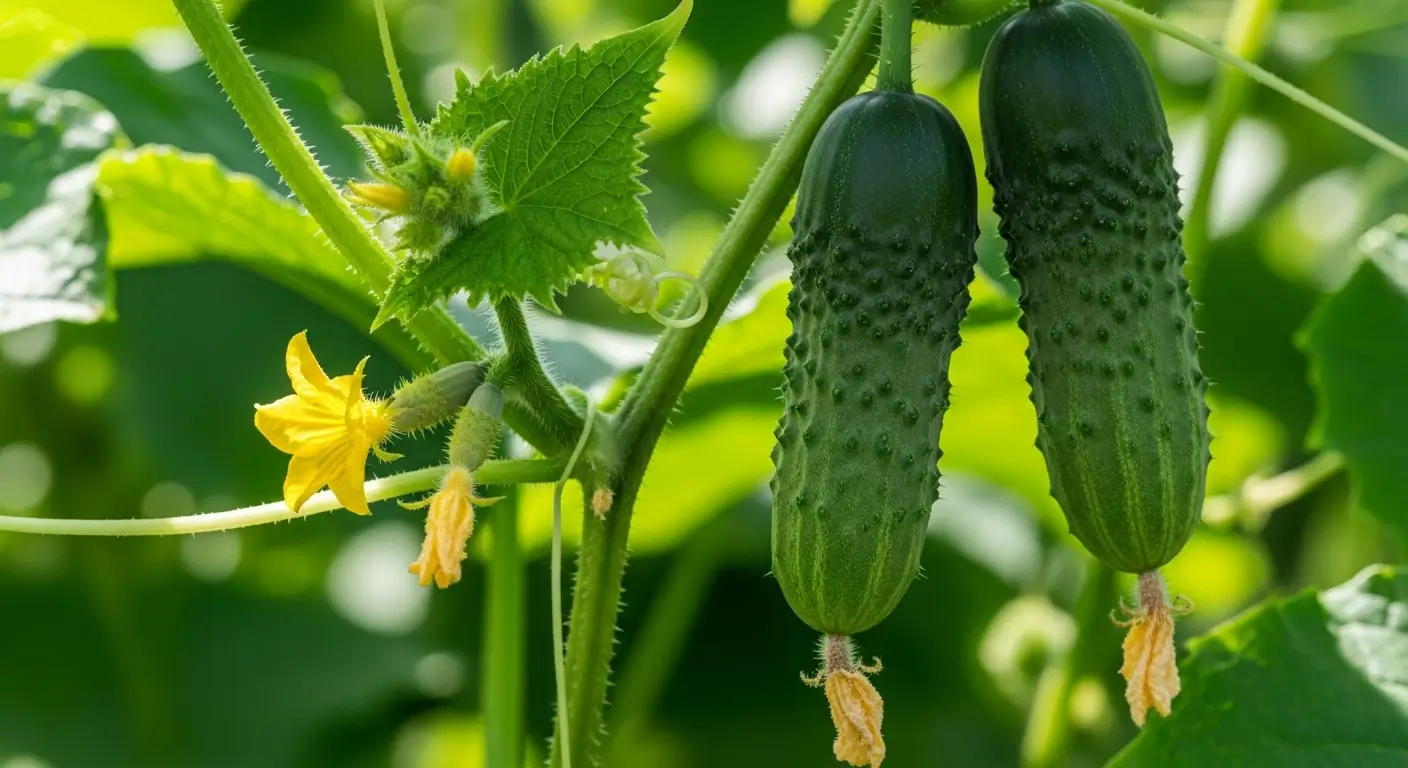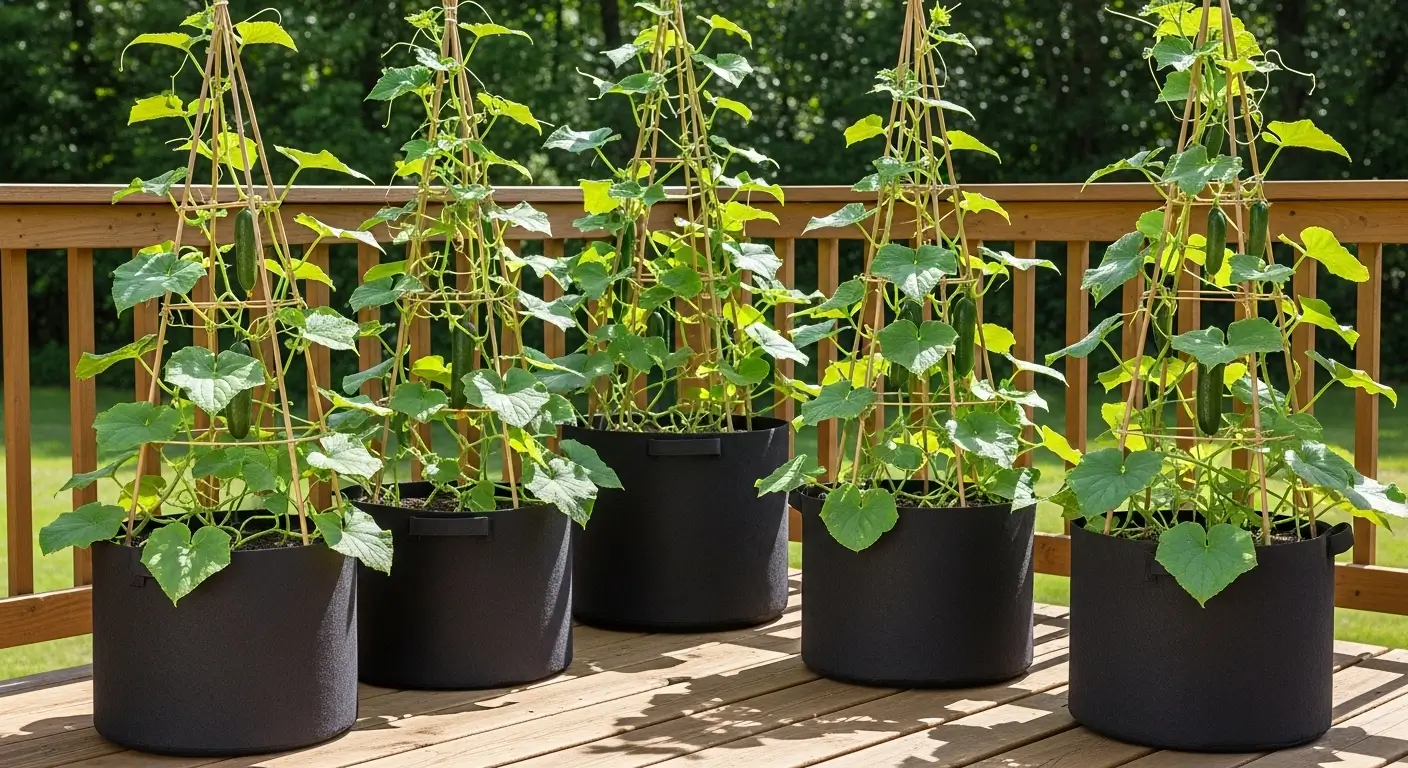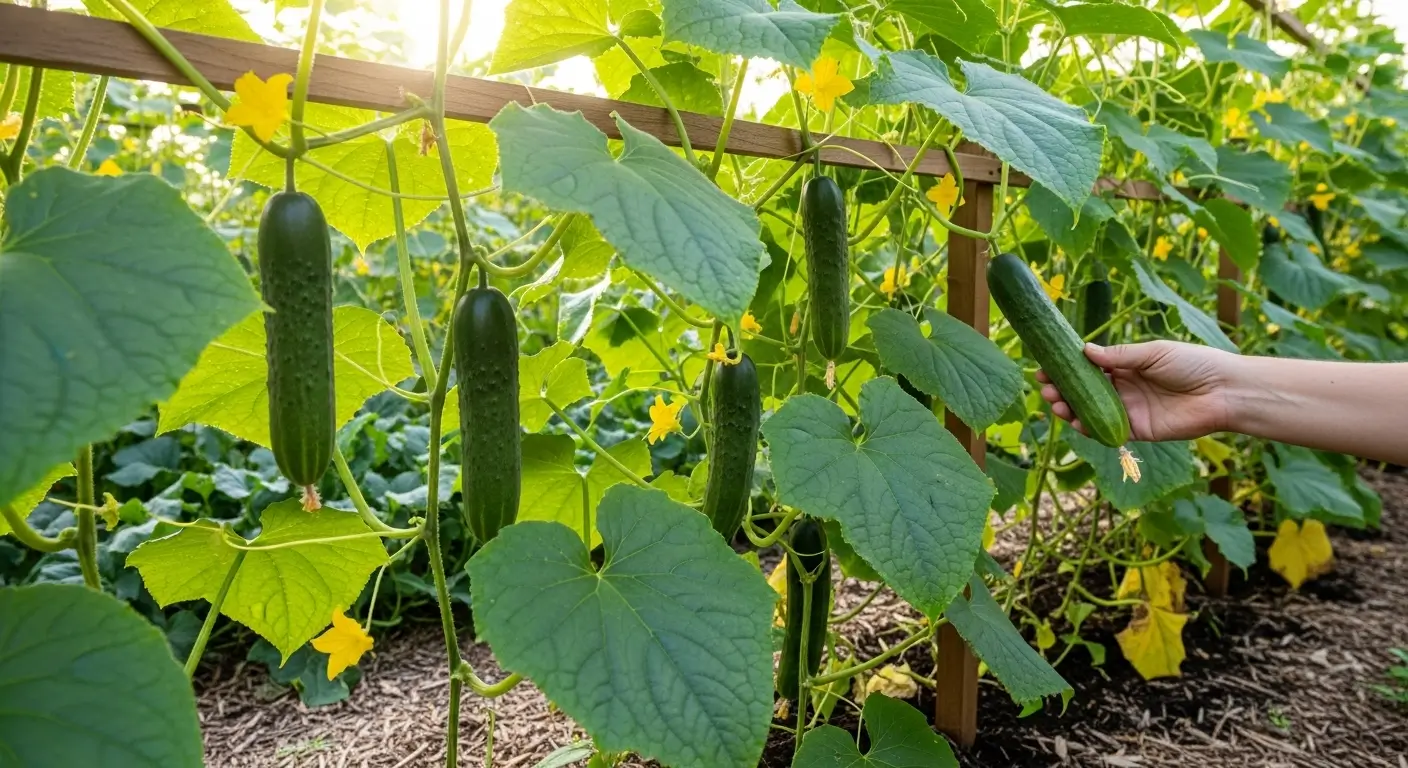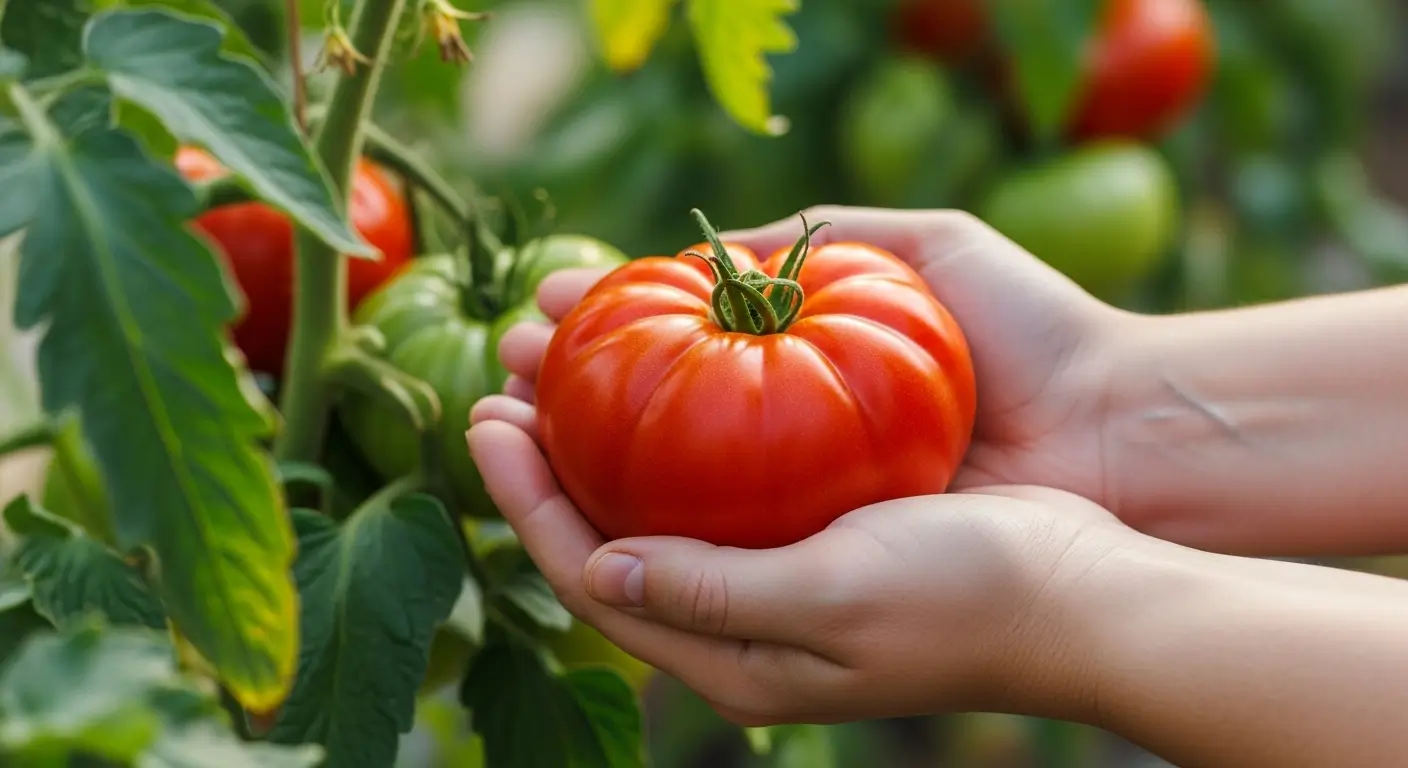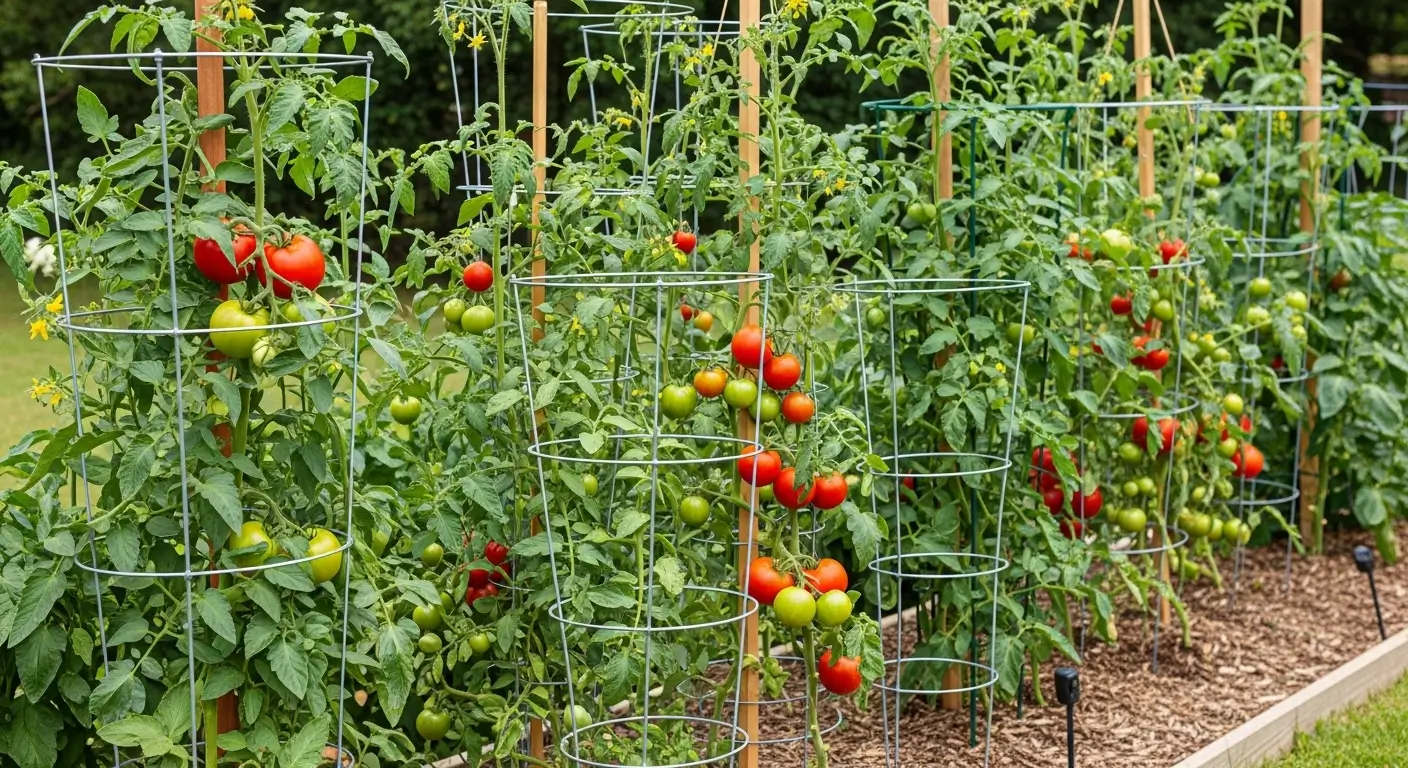So, picture this: I’m standing in my garden three years ago, hands on my hips, staring at these gorgeous cucumber plants that were giving me the finger. I mean, they looked amazing – all green and sprawling and healthy – but where were my cucumbers?! Meanwhile, my next-door neighbor Sarah, is practically drowning in crisp, perfect cukes from her tiny little patch.
I’m not gonna lie, I was a bit jealous. Okay, fine, I was really envious.
Sarah knew something I didn’t know about cucumber companion plants. While I was just winging it and hoping for the best, she’d figured out this whole companion planting thing. And let me tell you, once I learned what she was doing, my cucumber game completely changed.
If you’ve ever wondered why some gardens seem to just… work better than others, companion planting might be your missing piece. It’s not magic (though it kinda feels like it), and it’s definitely not as complicated as some gardening books make it seem. It’s just about being smart with what you plant where.
Table of Contents
Why Cucumber Companion Planting Actually Works
Look, I’ll be honest – when I first heard about companion planting, I thought it sounded a little woo-woo. Like, plants helping each other out? Come on. But after seeing the difference it made in my garden, I’m totally sold.
Here’s the deal with cucumbers: they’re kinda needy. Not gonna sugarcoat it. They want their soil just right, need consistent water (but not too much!), hate specific bugs, and need room to spread out without getting all cramped. It’s a lot. According to the University of Minnesota Extension, cucumbers thrive when their specific growing requirements are met through strategic garden planning.
But when you plant the right buddies nearby, it’s like giving your cucumbers a whole support crew. Some plants chase away the nasty bugs, others help the soil stay healthy, and some even provide a little shade when things get too hot. Honestly, it’s pretty cool to see it in action.
The best part? Many of these companion plants are stuff you probably want to grow anyway. Win-win!
The Best Cucumber Companion Plants That Actually Work
Radishes: Your Cucumber’s First Line of Defense
Okay, this one’s gonna sound weird, but stick with me. I plant radishes around every single cucumber hill now, and it’s been a game-changer. These little guys are like tiny bouncers for your cucumber patch.
Do you know those annoying striped cucumber beetles that show up and wreck everything? Radishes basically tell them to buzz off. I don’t know why exactly – something about the smell, I think – but it works.
Here’s what I do: I plant radishes about 2-3 weeks before I put my cucumbers in. Space them every 4-6 inches around where the cucumbers will go. By the time your cucumbers are getting settled in, you can harvest those radishes (they’re great in salads, by the way), and you’re left with nice, loose soil that cucumber roots love to dig into.
It’s like meal prep, but for your garden!
Marigolds: The Pest-Fighting Powerhouses
If I could only pick one flower to plant in my whole garden, it would be marigolds. Not just because they’re cheerful little things (though they totally are), but because they’re working overtime to keep the bad guys away.
These bright orange and yellow flowers are like a “Do Not Enter” sign for aphids, whiteflies, and gross little nematodes nobody wants to consider. I plant them all around my cucumber area – about a foot away from the main plants so they don’t crowd each other out.
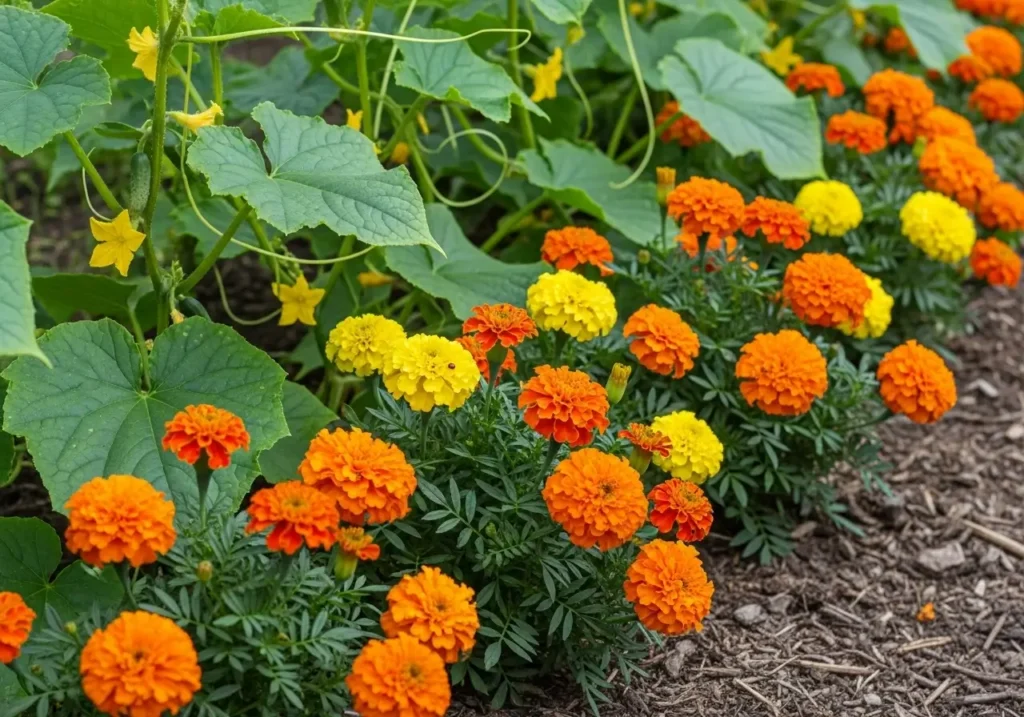
Pro tip: Go with French marigolds if you can find them. They’re the real pest-fighting champions, and they’ll bloom all Season long. Your garden’s gonna look like a party, and your cucumbers will be protected. What’s not to love?
Beans: The Perfect Space-Sharing Partners
This is where companion planting gets really clever, and honestly, it makes me feel like a gardening genius every time.
Bush beans and cucumbers are like roommates who actually get along – they don’t fight over the same stuff. Beans have these shallow, spreading roots, while cucumbers send their roots down deep. So they’re not competing for water and nutrients in the same soil layers.
But wait, it gets better! Beans actually make the soil better by adding nitrogen, which cucumbers need to grow those big, healthy leaves. I plant bush beans between my cucumber hills, and everybody’s happy.
It’s like the beans are paying rent by improving the neighborhood!
Corn: Creating Natural Cucumber Trellises
This one’s my favorite gardening hack; it always makes visitors double-take. If you’re growing the climbing kind of cucumbers, corn stalks make the perfect natural trellises.
You’ve probably heard of the “Three Sisters” thing with corn, beans, and squash, right? Well, I swap out the squash for cucumbers, and it works like a dream.
Here’s how: Plant your corn first and let it get about a foot tall. Then plant cucumber seeds around each corn stalk base. The cucumbers will climb up that corn like it was meant to be! It saves space and looks pretty amazing, too.
Just ensure you’ve got sturdy corn varieties – those cucumber vines can get heavy when loaded with fruit.
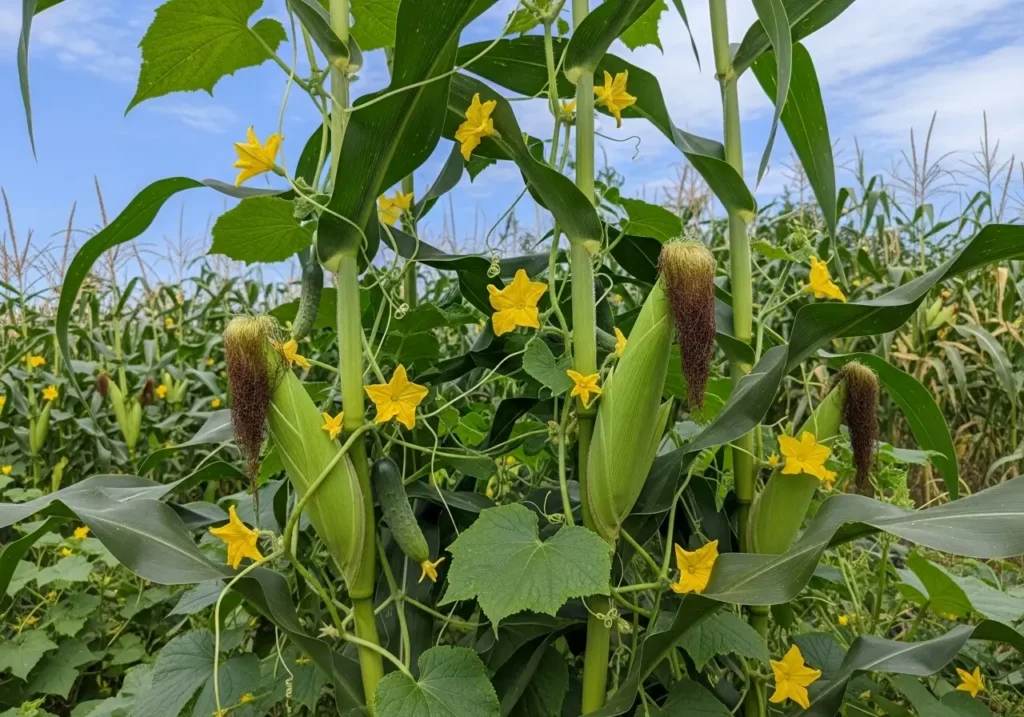
Nasturtiums: Edible Flowers That Earn Their Keep
I’m obsessed with nasturtiums, and not just because they’re gorgeous (though they totally are). These bright, peppery flowers are like decoy plants for all the bugs you don’t want on your cucumbers.
Cucumber beetles and squash bugs? They go for the nasturtiums instead of your precious cukes. It’s like having a sacrificial plant, but prettier. Plus, you can eat the flowers! They’re great in salads and have this lovely, peppery kick.
I plant them all around the edges of my cucumber patch. They also bring in the good bugs – ladybugs and those tiny wasps that eat the bad guys. It’s like hiring your own pest control team, but way more colorful.
Herbs That Make Cucumber Companions
A bunch of herbs are totally cool when hanging out near cucumbers. Honestly, having fresh herbs right there makes garden-to-table cooking so much easier.
Dill is like the classic cucumber buddy – there’s a reason they go together in pickles! It keeps cucumber beetles away and brings in beneficial wasps. Plus, fresh dill on everything is fantastic.
Oregano and basil are significant pest deterrents, too. I plant oregano as a border since it comes back every year, and I sneak basil plants wherever I’ve got a little extra space.
Chives are perfect because they barely take up any room at all, and they keep aphids away. Plus, fresh chives on scrambled eggs? Chef’s kiss
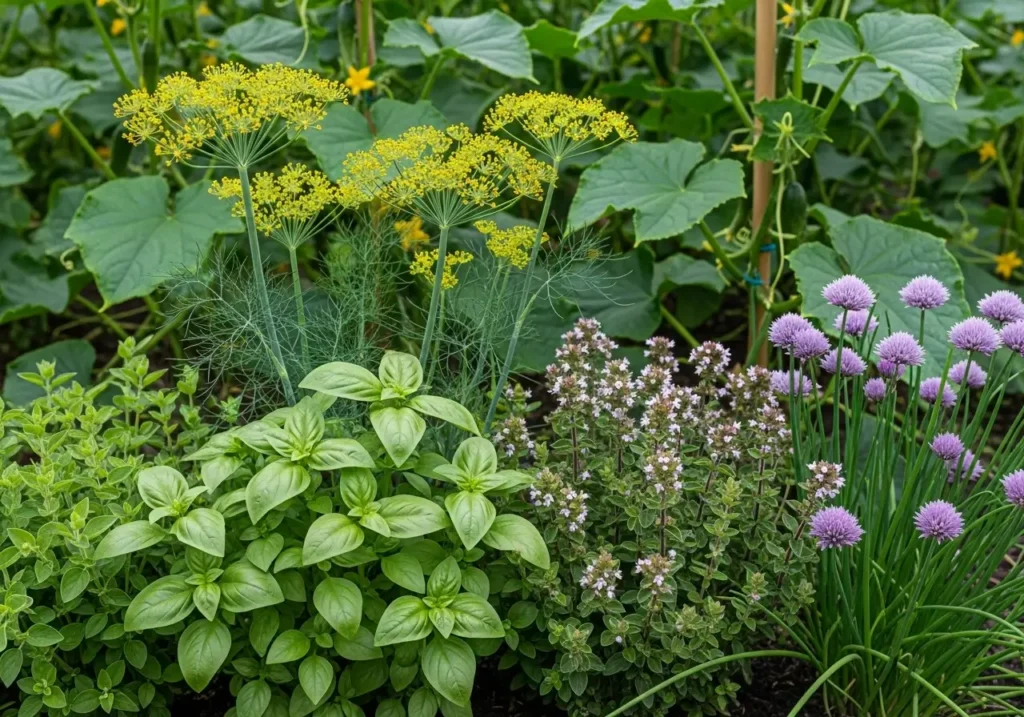
What Not to Plant Near Cucumbers: Lessons I Learned the Hard Way
Okay, now for the stuff that seems like it should work but doesn’t. Trust me, I’ve made every mistake you can make here, so learn from my failures!
Aromatic Herbs Can Be Too Much of a Good Thing
This one caught me off guard. While some herbs are great cucumber friends, others are too intense. Sage is the biggest troublemaker – it puts out these compounds that basically tell cucumbers to slow their roll.
I spent a whole season wondering why the cucumbers near my big sage plant were consistently smaller and sad-looking. Once I moved the sage to the other side of the garden, the problem was solved! Sometimes plants need their space, you know?
Potatoes: The Root Competition Problem
I thought potatoes and cucumbers would be garden BFFs since they both like similar soil conditions. Boy, was I wrong! They’re both total resource hogs, fighting over the same nutrients like siblings over the last piece of pizza.
Even worse, they can share diseases, which is just asking for trouble. Now I keep them on opposite sides of the garden, and everyone’s happier.
Melons and Other Cucurbits: The Family Feud Issue
Here’s something that totally surprised me: cucumbers don’t always get along with their own family! I know. You’d think cucumbers, melons, and squash would be like the Three Musketeers, but sometimes they’re more like reality TV drama.
They compete for resources and can cross-pollinate in weird ways that mess with your fruit. If you really want to grow them together, give them tons of space – like 6-8 feet apart – and maybe put some tall flowers or a trellis between them as a peace-keeping buffer.
Plants That Attract the Wrong Bugs
Sunflowers look so cheerful and innocent, but they’re basically putting up a “Stink Bugs Welcome!” sign. I learned this the hard way after a terrible stink bug year that took out both my sunflowers and half my cucumber crop.
Now I plant my sunflowers by the back fence, far from anything I want to eat!
Designing Your Cucumber Companion Garden Layout
After years of trial and error (okay, mostly error at first), here’s the setup that actually works for me:
Center: My cucumber plants – either in little hills for the bushy ones or along a trellis for the climbers. Inner circle: Radishes and bush beans tucked between the cucumber plants. Middle ring: All my herbs – dill, basil, chives, whatever I can fit. Outer border: Marigolds and nasturtiums for pest control and because they’re pretty
It’s like a fortress of good vibes protecting my cucumbers! This layout gives you layers of protection while using every inch of space. If you want the full scoop on growing excellent cucumbers, check out my complete guide to growing cucumbers – it’s got everything from soil prep to when to actually pick the darn things.
Timing Your Companion Plantings
Getting the timing right is super important, but it’s not rocket science. Here’s my game plan:
Early Spring: I plant radishes and peas first since they’re tough cookies that don’t mind cool weather. By the time my cucumbers need the space, these guys are ready to harvest.
Late Spring: Once I’m sure we’re done with frost, everything else goes in – cucumbers, basil, beans, marigolds. It’s like moving day for the garden!
All Season: I keep planting more radishes and lettuce every few weeks, so I’ve always got something ready to harvest. It’s like having a conveyor belt of fresh veggies.
You know what? All this timing stuff used to stress me out when I first started companion planting. I’d be second-guessing myself constantly – “Should I plant the beans now? Are the radishes ready? What about the marigolds?”
So I created this little timeline based on what actually works in my garden, year after year. It’s become my go-to guide, and honestly, it takes all the guesswork out of the process. Here’s exactly how I time everything in my cucumber companion garden:
📅 Your Cucumber Companion Plants Through the Season
🌱 Early Spring Setup
🌞 Main Planting Season
🥒 Peak Growing & Harvest
🌿 Continuous Harvest & Care
🍂 Season Wind-Down
This timeline has been a total game-changer for me! Following this schedule means I’m not scrambling to figure out what to plant when, and everything flows together naturally. The best part? You can adjust it for your climate – just shift everything a few weeks earlier if you’re in a warmer zone, or later if you’re dealing with shorter growing seasons like we sometimes get here in Illinois.
Trust me, once you get this rhythm down, companion planting becomes second nature. You’ll start to see how each plant has its moment to shine while supporting the others.
Managing Your Companion-Planted Cucumber Garden
The thing about companion planting for cucurbits is that you’re basically running a little ecosystem, not just growing individual plants. It sounds complicated, but it’s really not – you gotta think about the big picture.
Watering: I water deeply but not super often. It encourages everyone to grow strong roots instead of getting lazy at the surface. Soaker hoses are my best friend here – they keep water off the leaves, which prevents all sorts of nasty diseases.
Mulching: I go heavy on the mulch – like 3-4 inches of straw or shredded leaves around everything. It keeps the soil moist and happy, and I don’t have to weed as much. Win-win!
Harvesting: You gotta keep picking stuff! If you let your radishes or herbs go to seed too early, they’ll stop producing. They’re saying, “My job here is done,” and checking out.
If you’re working with limited space, my guide to growing cucumbers in raised beds has many tips for squeezing companion plants into smaller areas.
Troubleshooting Common Companion Planting Issues
Even when you do everything right, sometimes things get wonky. Here are the problems I’ve run into and how to fix them:
Companions taking over: If your beans or other buddies crowd out your cucumbers, don’t be afraid to get out the scissors! I’ve learned that sometimes you must be ruthless to keep everyone happy.
Bugs showing up anyway: Remember, companion plants help reduce pest problems – they don’t eliminate them entirely. Keep an eye on things and be ready to step in with row covers or release some beneficial bugs if needed.
Some plants thrive, others struggle: Look at what companions are nearby the problem plants. You should give them more space or move some bullies out of the way.
The Indoor Companion Growing Alternative
Growing cucumbers inside? You can still do the companion thing! Herbs like basil and chives grow great in containers alongside those cute little dwarf cucumber varieties.
For the full rundown on indoor cucumber growing, check out my indoor cucumber growing guide. It’s got everything you need to know about bringing the garden inside.
Your Cucumber Companion Garden Success Story Starts Now
After more than ten years of growing cucumbers with various plant buddies, I can honestly say companion planting has totally changed my garden game. It went from being a bunch of random plants doing their own thing to this fantastic, connected system where everyone helps everyone else out.
My cucumber harvest is way better now. I’ve got fewer pest problems, and honestly? My garden looks better. More intentional.
The coolest part is that I’m still learning new stuff every Season. Just last year, I tried planting cosmos flowers near my cucumber trellises, and they brought in all these beneficial insects I’d never seen before. It was like discovering a whole new layer of the garden ecosystem!
My advice? Start small this Season. Maybe try radishes and marigolds as your first cucumber companion plants. See what works in your particular garden – every place is different, and what works perfectly here in Illinois might need some tweaking for your climate.
Don’t be afraid to experiment! Some of my best discoveries have been happy accidents. Honestly, even failures teach you something valuable.
So, what companion planting combos are you excited to try? I’d love to hear about your experiments – successes and epic failures – in the comments! The best gardening tips come from sharing our stories and learning from each other’s adventures in the dirt.
Cucumber Companion Plants: Frequently Asked Questions
What are the best companion plants for cucumbers?
The absolute best cucumber companions in my experience are radishes, marigolds, and bush beans. Radishes are like little bodyguards – they naturally keep cucumber beetles away and loosen up the soil with their roots. Marigolds are total workhorses, deterring aphids and other pests while adding gorgeous color to your garden. Bush beans are perfect roommates since they don’t compete for the same nutrients and actually improve the soil by fixing nitrogen. I also love adding herbs like dill and basil – they smell amazing, keep pests away, and you’ve got fresh ingredients right there for cooking!
What plants should not be grown near cucumbers?
I learned this one the hard way! Never plant sage near your cucumbers – it releases compounds that basically tell cucumbers to slow down their growth. Potatoes are another no-go since they’re both heavy feeders fighting for the same nutrients. And here’s one that surprised me: sunflowers actually attract stink bugs that love to munch on cucumber plants too. I also keep melons and other cucurbits at least 6-8 feet away from my cucumbers to avoid competition and weird cross-pollination issues.
How far apart should cucumber companion plants be spaced?
Spacing really depends on what you’re planting together. I put radishes about 4-6 inches around my cucumber hills, and they’re ready to harvest before the cucumbers need that space anyway. Marigolds get planted about 12 inches away from cucumber plants so they don’t crowd each other out. Bush beans can go right between cucumber hills since their root systems don’t compete. For herbs like dill and basil, I tuck them into any available corners – they don’t need much room and actually seem to thrive when they’re close to the action!
